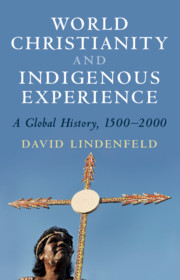Book contents
- World Christianity and Indigenous Experience
- World Christianity and Indigenous Experience
- Copyright page
- Contents
- Maps and Illustrations
- Tables
- Acknowledgments
- 1 Introduction
- 2 Colonial Latin America
- 3 Native North America
- 4 Sub-Saharan Africa and the Diaspora
- 5 The Middle East
- 6 India
- 7 East Asia
- 8 The Pacific
- Conclusion: Reflections on Concentrated and Diffuse Spirituality
- Endnotes
- General Bibliography
- Index
4 - Sub-Saharan Africa and the Diaspora
Published online by Cambridge University Press: 30 April 2021
- World Christianity and Indigenous Experience
- World Christianity and Indigenous Experience
- Copyright page
- Contents
- Maps and Illustrations
- Tables
- Acknowledgments
- 1 Introduction
- 2 Colonial Latin America
- 3 Native North America
- 4 Sub-Saharan Africa and the Diaspora
- 5 The Middle East
- 6 India
- 7 East Asia
- 8 The Pacific
- Conclusion: Reflections on Concentrated and Diffuse Spirituality
- Endnotes
- General Bibliography
- Index
Summary
Missionaries, finding that Islam and Judaism were impervious to their conversion efforts, concentrated on “improving” the non-Western Christians in the Middle East. The chapter traces the multiple Christian denominations stemming from pre-Islamic times and their status under Islam, including the Ottoman Empire. In the nineteenth century these Christians were receptive to Western educational efforts. Relations soured with the rise of nationalism and the drawing of territorial boundaries following World War I, resulting in the decline of the Christian population in the twentieth century.
Keywords
- Type
- Chapter
- Information
- World Christianity and Indigenous ExperienceA Global History, 1500–2000, pp. 91 - 141Publisher: Cambridge University PressPrint publication year: 2021

